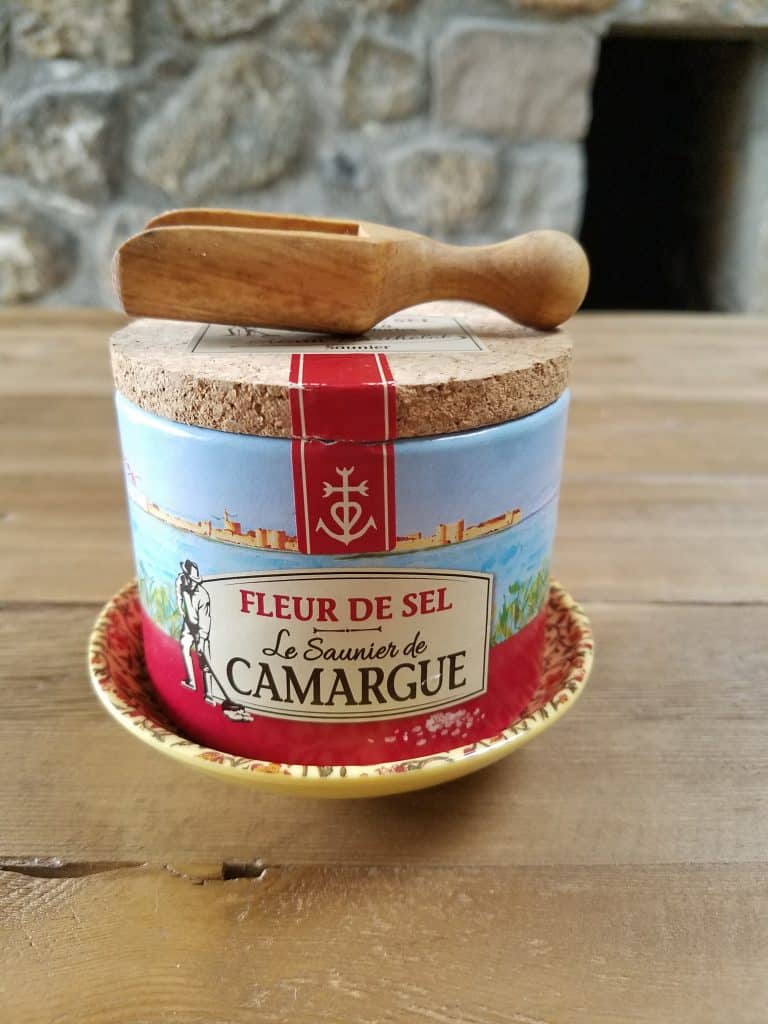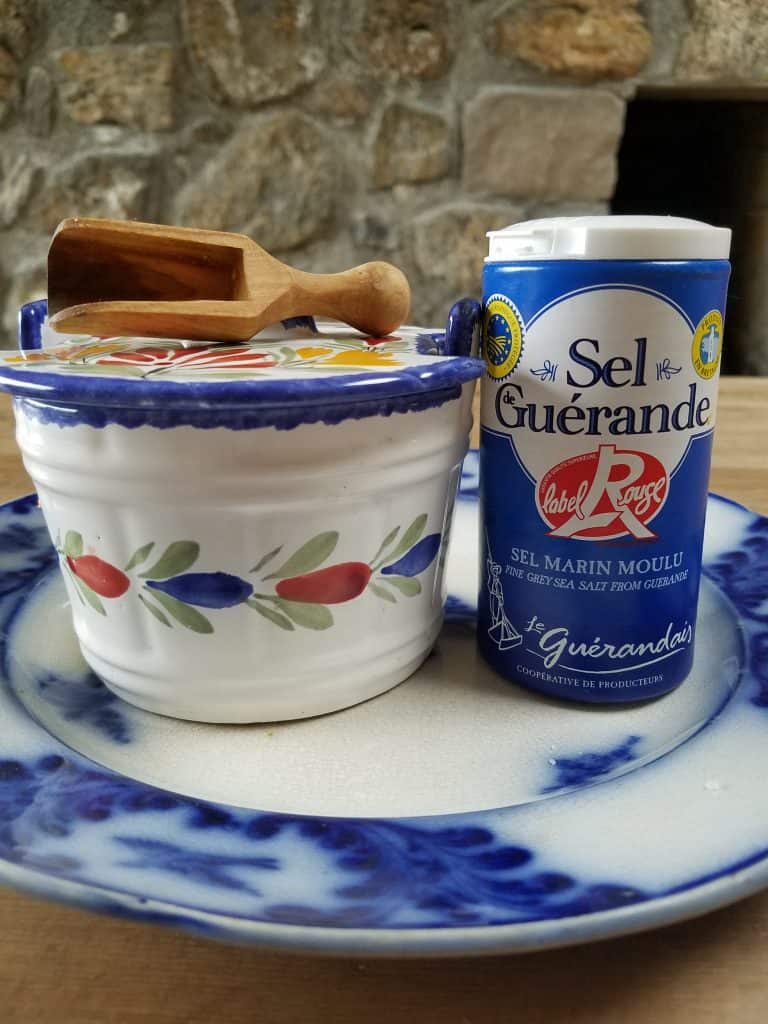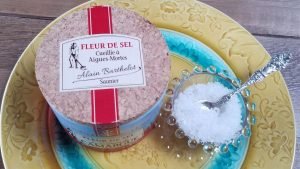
Have you ever read a French cookbook which required you to use a pinch of Fleur de Sel (pronounced flure-de-SELL) or perhaps, the cookbook requested a “finishing salt”? Up until I discovered Fleur de Sel, or “flower of the sea” as it translates, I never thought much about salt.
Salt is salt, right? Wrong!
I discovered that Fleur de Sel is known by Chefs all over the world as one of the finest and rarest of all salts. It tastes like the sea, and it is snow white in color. I always cook with this magical salt any time I can.
What’s the Origin of Fleur de Sel?
We know that even today this salt comes mainly from France, off the coast of Brittany, and has a long history. Some believe the first to use sea salt were the Egyptians and the Gauls. First written records state it was found in 868 and was used regularly by the Romans to preserve their fish and as a medicine in the form of a salve.
Records also tell us that salt gathering was only carried out by women. Men were considered too rough to handle the fragile crystals. From the salt water flats of the Atlantic, the women would carefully skim only the top layer of the pyramid shaped crystals that floated to the top. They used a rake called a “lousse a de fleur” or “flower louse.” These women were called “paludiers” or salt workers.

Once the gathering was completed, the women carried the salt back to the village in deep bowls balanced on their heads. Around 15 hundred salt marches supplied most of Brittany’s salt until the 1800s, when salt caves were built.
Harvesting the salt was still carried out by women up through the 19th century. Even today, in the French village of Guerande, salt harvesting is still carried out by hand.
What Makes Fleur de Sel so Special and so Pricy?
Like many commodities grown today – coffee beans, grapes, olives etc. – the quality of the product depends on the natural environment it grows in. As soil is the terrain of crops, salt beds are the terrain of Fleur de Sel, and these beds are managed and harvested like any other crop.
In the case of Fleur de Sel, the best environment is the northern Atlantic coast of France (Brittany). Only the Brittany coast provides the very limited weather conditions needed to produce this particular salt, and because it is still harvested by hand, we have a product costing $30.00 or more per pound.

We now understand why fleur de sel differs from ordinary table salt. Everyday sea salt is simply evaporated seawater that is collected and then stored in mounds.
What Are the Characteristics of This Salty “White Gold”?
Purity
Fleur de Sel is the purest form of salt you can buy. It contains no gypsum (a soft white mineral formed by hydrated calcium sulfate). It’s just salt!
Health Benefits
Fleur de Sel contains trace minerals such as magnesium, calcium, potassium, iron and silica oxide.
Taste
Simply put, Fleur de Sel tastes like the ocean! It’s flaky, delicate and moist. Due to the moisture content of the salt crystals, the crystals stick to your tongue offering the perception that this salt is more potent than other salts. It is not saltier but remember, a little goes a long way when used in cooking.
How Do You Cook with Fleur De Sel?
Due to the exorbitant cost of Fleur de Sel, I recommend you use it for the most part as a “finishing salt.” That means use it almost like a garnish sprinkled over your prepared dishes right before serving.
By adding it right before you serve your foods, your diners will reap the benefit of receiving a burst of flavor, a slight crunch, and you will be able to see the salty crystals before they dissolve. Once dissolved no worries, the flavor will still be there.
Storage
Always store your salt in a cool dry place in a glass, wood or porcelain container with a tight fitting lid.
Salt Throwing?
It’s a common food superstition to throw spilled salt over your left shoulder to prevent bad luck. I recommend you do not throw your Fleur de Sel over your shoulder but use a less expensive salt for this custom. Save this remarkable salt for your taste buds only!
What do you know about Fleur de Sel? Where did you hear about it? Have you been to Brittany? Do you use Fleur de Sel when cooking special dishes? What do you like most about this salt?





